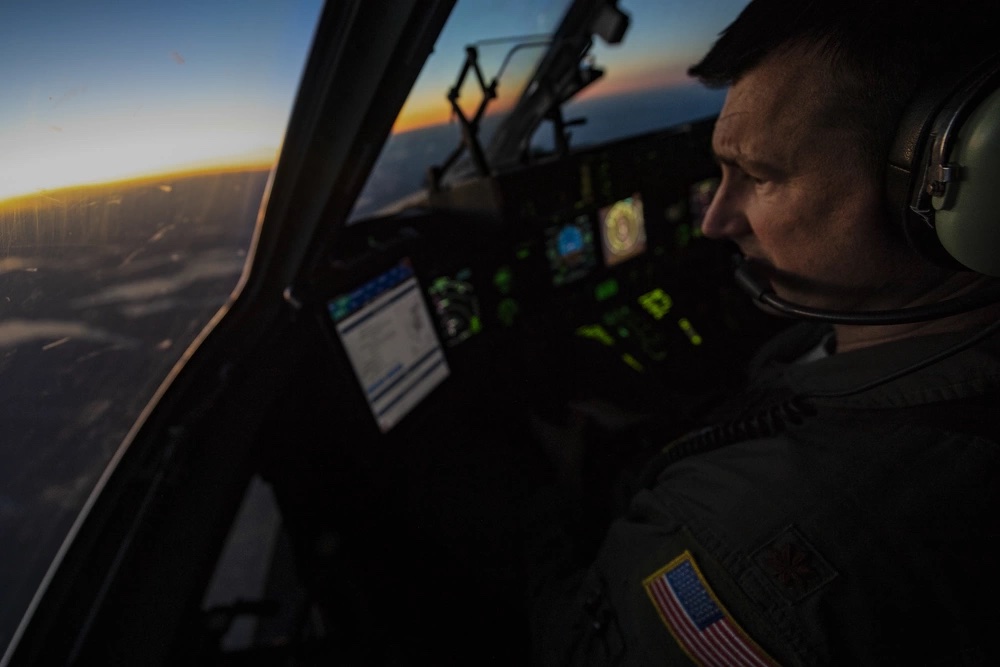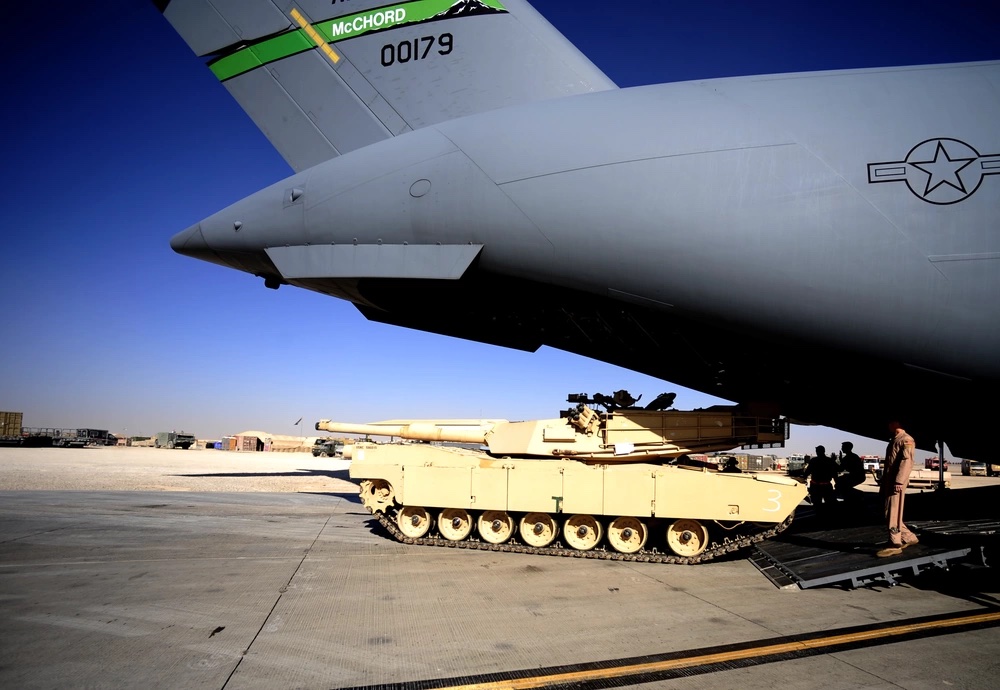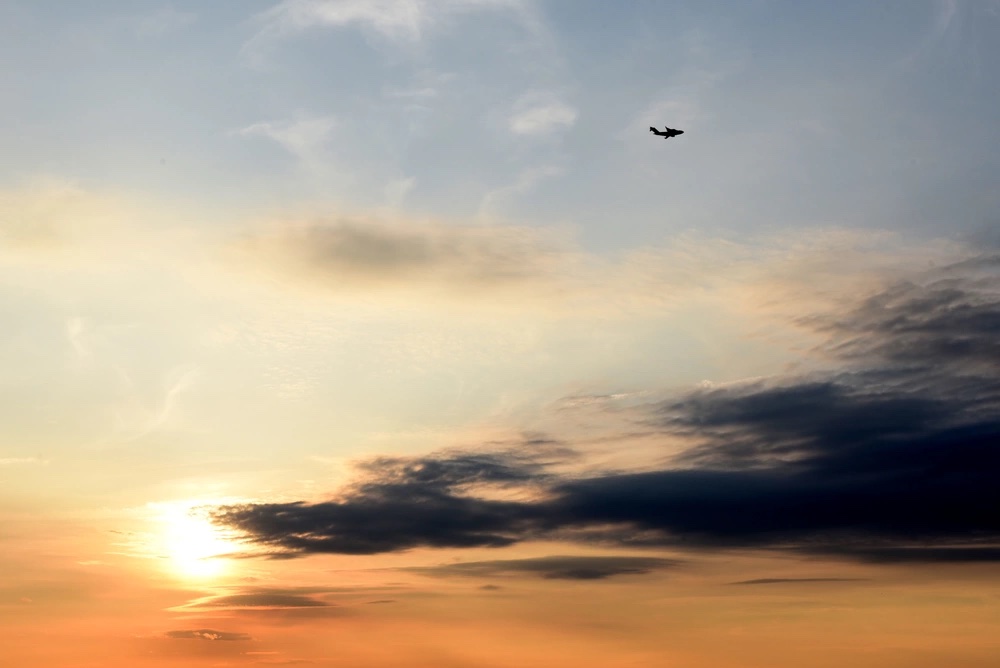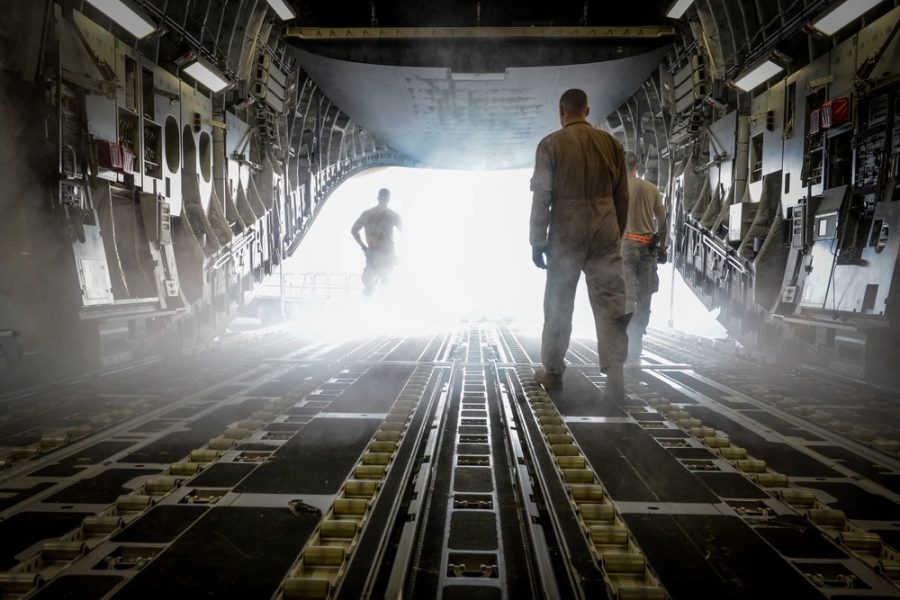A new research paper published in an Air Force academic journal predicts that warming air temperatures driven by climate change could reduce the amount of cargo a C-17 Globemaster III transport jet can carry by 8.5 percent across much of the world by 2039, and by 29.3 percent year-round by 2099 in the worst-case scenario.
That means the C-17, a core component of the U.S. military’s strategic airlift capability, would not be able to fly as many troops, supplies, and equipment to respond to conflicts or humanitarian missions as quickly as it can today. Moving the same amount of cargo would require more flights, more maintenance, more gas, a higher bill for taxpayers, and a longer wait for troops and civilians in need of support.
Even if the worst-case predictions do not come to pass, the Department of Defense “should expect to sustain dramatic performance degradation to all aviation assets, most clearly evidenced by the decreasing thrust production that mandates reduced takeoff weight in strategic airlift platforms,” according to the paper, which ran in the summer 2023 edition of Air & Space Operations Review, published by the Air Force’s Air University Press.
As extreme weather events have impacted and even incapacitated several Air Force bases in recent years, the service has taken steps to be able to sustain combat-ready air and space power through more frequent storms, floods, and heat in the future. But while the Department of the Air Force has laid out a strategic-level Climate Action Plan and a Climate Campaign Plan for implementing it, one of the study authors felt more discussion was needed on the tactical impact of climate change, which young pilots like herself may face in the years to come.
“Climate change is a strategic-level adversary, but the impacts of it fall down on people like me and the Airman 1st Class maintainer who’s working on the C-17, or the C-17 pilot who is double-turning flights because they need to get all this cargo transported,” 1st Lt. Kaitlyn Benton, a pilot trainee assigned to Euro-NATO Joint Jet Pilot Training at Sheppard Air Force Base, Texas, told Air & Space Forces Magazine. Benton clarified that her views do not necessarily represent those of the Air Force or Department of Defense.

Benton hopes to fly fighter jets, but she chose to study the C-17 for the paper, which is her master’s degree thesis in geospatial intelligence, in part due to its key role in the military’s ability to project forces.
“If we had an adversary that was developing technology that would decrease the effectiveness of our aircraft the same amount that climate change is projected to, we’d be talking about it and we’d be briefed about that kind of thing,” she said. “I’ve been briefed about China or Russia, but I’ve never been briefed necessarily about the other strategic threat, which is climate change, which is very real for my career field.”
Density Altitude
The study analyzed how climate-warming projection data from 2020 to 2099 could affect density altitude, which is one of several metrics that can affect an aircraft’s maximum takeoff weight and runway length requirements. Aircraft require a certain amount of air density to generate lift, but air density decreases as temperature and altitude increase. Benton referenced an image taught in pilot training, where blue dots symbolize air particles beneath the wings of an airplane.
“As it gets hotter, those blue dots are further apart, which is the air becoming less dense,” she said. “An airplane flying at X height on a cold day has more little blue dots than an airplane flying at that same height on a hot day.”
Calculating the effect of density altitude on military aircraft performance is a tricky task, considering the many variables that differ between missions. Like with many scientific research projects, Benton had to assume a few constants as a starting point. In this study, the C-17 carries a maximum payload, flies maximum range, and takes off with maximum allowable fuel without extra fuel tanks. Benton acknowledged those circumstances may not arise often in day-to-day operations.
“I think there is an opportunity to pursue what the trade-off could look like” between range and payload, she said. “That is the big unanswered component for me after having written it.”

Key Findings
- From 2020 to 2039, the C-17 would be under a year-round 8.5 percent payload restriction in more than half the area covered by U.S. Central Command (CENTCOM) and U.S. Indo-Pacific Command (INDOPACOM), and more than 85 percent of the area covered by U.S. Southern Command (SOUTHCOM) and U.S. Africa Command (AFRICOM). An 8.5 percent decrease in maximum payload represents about 14,500 pounds, roughly the weight of an empty UH-60 Black Hawk helicopter. A C-17 can carry two such helicopters in its cargo hold.
- From 2020 to 2039, nearly all of AFRICOM would be under a year-round 17 percent takeoff weight reduction (about 29,000 pounds), which means a C-17 would not be able to carry any Black Hawk helicopters. About three-quarters of the command area would be under a year-round 29.3 percent reduction, equivalent to around 50,000 pounds—equivalent to an M2A2 Bradley infantry fighting vehicle. A C-17 can normally carry two such vehicles.
- Approximately 69 percent of SOUTHCOM, 72.6 percent of AFRICOM, and roughly 36 percent of both CENTCOM and INDOPACOM are expected to experience a year-round 29.3 percent payload reduction by the year 2099.
- U.S. Northern Command (NORTHCOM) and U.S. European Command (EUCOM) will have “substantially higher rates” of density altitude increase relative to the other commands, the study says. While those commands may not reach the same mission-limiting density altitude levels as other commands by 2099, they would be on the rise.
Heating up
The Air Force will likely not be flying the C-17 anymore by 2099—which would mark more than a century in service for the airlifter. In August, the service picked a startup to build a prototype blended-wing body aircraft to test design elements which could lead to more efficient airlift and aerial refueling platforms. Flight testing is set to start in 2027, and a senior official said time is of the essence to develop the next generation of mobility aircraft.
The newcomers could help mitigate the effects of density altitude, but it will likely be years before they replace the C-17, the oldest of which was delivered in 1993 and the youngest in 2013. In the meantime, rising global temperatures could affect the military’s ability to carry out the 2022 National Defense Strategy, which is built on the principles of reassurance and deterrence.
“The U.S. military cannot guarantee responsiveness if strategic lift assets are severely degraded throughout much, if not all, of the calendar year,” the study states. “The ability to respond to global demands quickly becomes contingent on the timing of those demands and the level of performance degradation associated with that timing.”

One anonymous C-17 pilot said the ‘Moose‘ community has dealt with the effects of hot weather for the past two decades in the Middle East, where cargo constraints were in place from May to September.
“As the temperatures rise year-round, we are going to have to deal with the constraints more often,” the pilot told Air & Space Forces Magazine. “In practice, like everywhere else in the aviation industry, we will likely have to trade fuel and reduced range to continue to move the cargo. It will mean more fuel stops or potentially air refueling when needed.”
A second anonymous C-17 pilot explained that the jet’s mission computer accounts for height above sea level and ambient temperatures, which helps determine cargo weight for safe takeoff conditions. He shared Benton’s concern about hot air and cargo, but he argued that other issues, such as changing weather patterns forcing base relocations or causing conflicts around the globe, will have a more significant impact on the C-17 fleet and the Air Force writ large.
“Climate change could upend the world order and I don’t say that to be alarmist,” he said. “Glad people are seriously looking into this topic.”
On the tactical side, warmer air could also affect bombers, tankers, rotary aircraft, and even fighters to some degree. Those categories could be promising areas for future study, said Benton, who hopes the Air Force can produce more studies on the tactical impacts of climate change and help Airmen plan accordingly.
“I know that in the DOD there are climate response teams where they talk about these issues,” she said. “My research is a very small part of the overall understanding that the Air Force has on climate change, and really I’m just trying to contribute to work that is already being done.”

